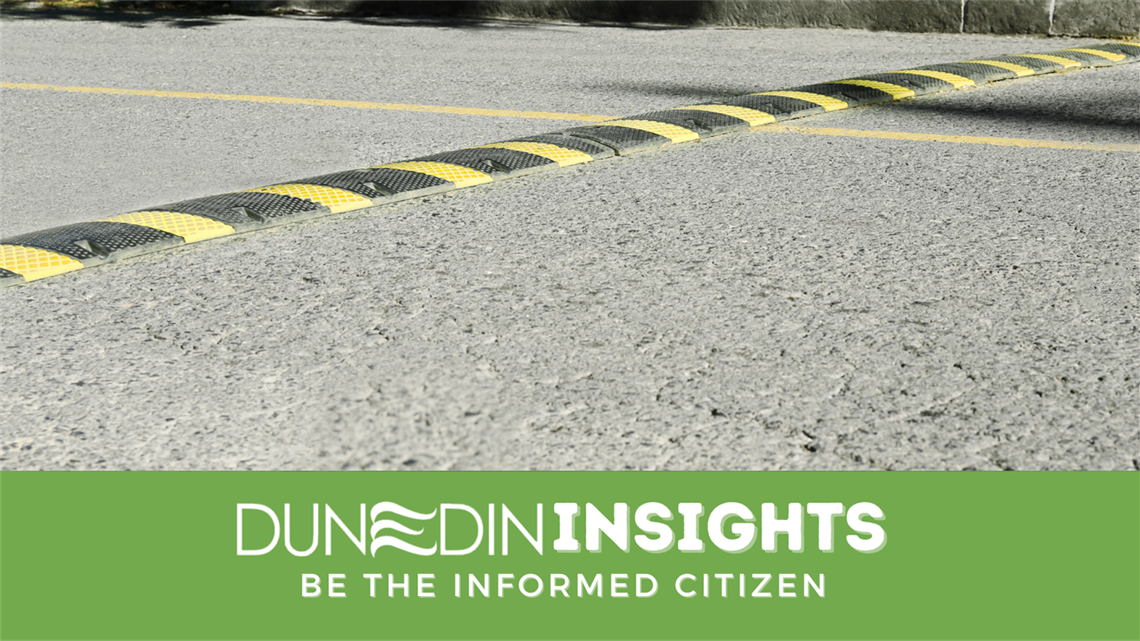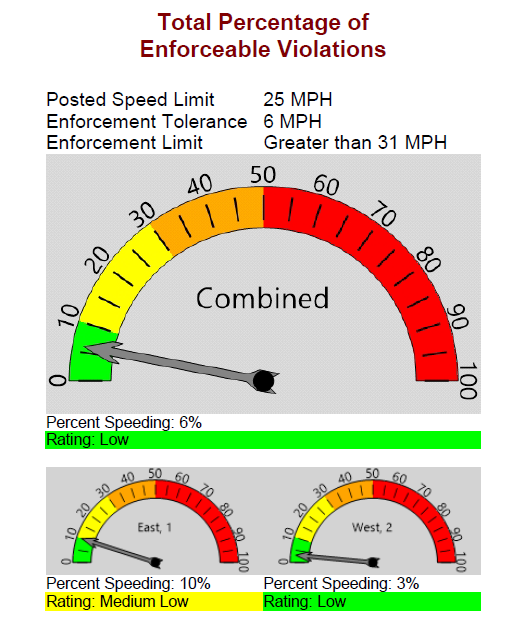Why Traffic Calming isn’t Just About Speed Humps
Published on February 15, 2024

Written by Mary Sheets, City Engineer
Traffic calming is often a top request of residents hoping to slow traffic down. And often, we think of speed humps for traffic calming. But there are several ways to calm traffic, as well as a decision-making process and specific criteria that City engineers and City staff must follow.
The primary goal of traffic calming is to reduce speed and make the roadway safer for all users. There are many engineering tools in the toolbox, besides speed humps, for traffic calming.
They usually involve physical changes to the roadway, creating a “feeling” that causes the driver to slow down. And just like real tools, some do the job better in some locations than others.
There is a decision-making process and specific criteria municipalities need to follow to ensure that safety issues are handled the same throughout the state when deciding which traffic calming tools are best used in any location.
1 - Traffic Engineering Studies
A traffic study is initiated when the public contacts the City staff concerned about speeding. The traffic study collects speeding data using the Jamar Traffic Data Radar. This system provides data as shown below. For this example, we can see that the percentage of people speeding was about 6%. Because of the low rating, no changes were recommended.
2 - How are speed limits determined?
Most people will drive at the speed they feel comfortable with, regardless of posted speed limits. Lowering the speed limit is not effective in slowing down drivers. Setting speeds much lower than current operating speeds may only achieve desired compliance levels with other roadway changes or enforcement. It is necessary to change the physical characteristics of the road to make people want to drive slower. Speeds are usually set based on the type of road and the 85th percentile speed, or the rate at which 85% of motorists travel while using the road. That means that out of 100 people, 85 drive at or near the speed limit.

3 - Traffic Calming Tools
If a traffic study shows a speeding issue, what can the City or County do to reduce speeding?
- Speed enforcement is usually the first method used to reduce speeding. Enforcement of speed limits is the responsibility of various law enforcement agencies, and they will be contacted to provide enforcement in an area for a specified time period.
- Other traffic calming techniques may be used if enforcement does not reduce speeding. These include speed humps, traffic circles, chicanes (modified medians), and narrowing the roadway (narrowing the lanes using pavement markings). It is important to remember that a City or County should not create a new problem by trying to fix an existing one.
The method most citizens request are the speed humps or speed tables. However, most Cities or Counties no longer install new speed humps. The reasons are:
- They are hard to maintain and frequently wear down.
- They delay first responders. A few seconds lost navigating a speed bump is a few seconds delay to responding to a fire or a medical emergency.
- It moves traffic to the adjacent streets.
- If cars drive over speed bumps at average speed, the vehicle can see significant damage, especially the shocks.
Traffic calming will always be a balancing act between mobility and safety. Many factors are considered when reviewing neighborhood traffic concerns to determine the most feasible traffic control measures. These factors include the surrounding roadway network, resident and emergency vehicle access, speeds and/or traffic volume, accident or crash history, and construction in the nearby area. Education and enforcement will also be important tools in achieving any reduced speeds.
For more information or questions on traffic calming, contact Dunedin’s City Engineers at https://www.dunedingov.com/Your-Government/Departments/Utilities-Engineering